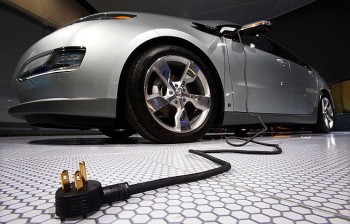
With ever increasing prices of gasoline, car owners have been constantly on the lookout for cheaper source of energy to power their vehicles. Thanks to many technological inventions, these people need not worry any longer about steep increase in the prices of gasoline as electric cars have re-entered the markets with a bang after going off the roads for a long time due to lack of demand.
Buoyed by the amazing popularity for electric cars, many people are enthused by the idea of converting their gasoline-powered cars into electric vehicles. It is not at all difficult to construct an electric car by replacing the current gasoline-powered internal combustion engine with an electric motor. A few technical details regarding car conversion and small amount of expenditure are all that are required for electric car conversion.
Many people may not be aware that electric cars were first introduced in the beginning of 1900s, when gasoline was very costly and that forced people to start driving electric cars. During that time the technology of gasoline-powered cars was primitive and there was no key to ignite the engine. People had to painstakingly turn on a lever in front of the car to start the engine.
Gasoline-powered engines emitted plenty of smoke and also had very deafening mufflers. With the passage of time, several innovative technologies were developed and people adopted easier and more productive methods to extract gasoline. Later versions of cars incorporated electric starters and the gasoline-powered cars could cover more distance than electric cars.
With these advantages, gasoline-powered cars soon became the most popular mode of transport. However, with gasoline prices at the peak at present and vigorous campaign all over the world for a pollution-free, green environment by reducing emissions of harmful gases, people have now begun moving towards popularizing electric cars once again.
An electric car does not need gasoline at all to power the engine as they are run by the electric current produced by the batteries. Electric car motors are equipped with 12 to 24 volt batteries for each electric vehicle. However, these batteries are required to be charged during the night by plugging it into an electric outlet.
By the time one gets up in the morning he will find the car with the batteries fully charged. A single charge will easily cover a distance of up to 200 miles before it needs recharging again. The main advantage of conversion of the existing traditional car to an electric one is that it will obviate the need to fill gasoline in the vehicle thereby saving a lot of money.
The money saved can be utilized for various other purposes. By owning an electric car, one can also participate in the ‘go green movement’ to cut down the harmful effects of global warming. There is no need to convert the entire vehicle. There are a number of do-it-yourself (DIY) electric car conversion kits available in the market or DIY electric car conversion kits that can be downloaded from the online websites on the internet It is worth buying these guides that give step by step instructions for building an electric car from a gasoline vehicle.
These DIY guides are reasonably priced and facilitate conversion of the present gasoline vehicle into a cost-effective Eco-friendly green car.
